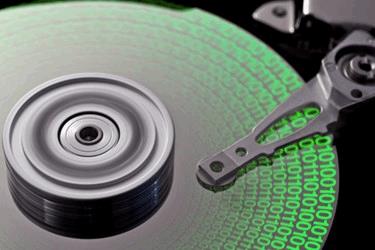Archiving Vs. Backup — The Great Debate
By Bill Tolson, Vice President of Marketing, Archive360

Or, how to ensure healthy long-term data storage and management.
The confusion — perhaps better described as the debate — over backup versus archiving continues to rage on. As healthcare organizations are trying to do more with flat or falling budgets — while at the same time facing competitive, government, and/or legal pressures to store more data for longer — the healthy choice is to understand the difference.
Traditionally, healthcare organizations have thought about backup as the process by which IT makes a copy of current data so that, if an unforeseen event or disaster takes place, information and applications can be recovered and business processes continue. In this digital age it doesn’t take a brain surgeon to tell you maintaining continuous operations is critical.
A data loss event can be momentous, such as a hurricane, flood or other natural disaster — or as simple and commonplace as an email server becoming corrupted. In either case, the organization must turn to the backed-up data store.
An ongoing challenge with traditional backup is the cost involved — the more data you have, the more expensive and time consuming it becomes to backup. Also: where to backup? Onsite, offsite, disk, tape? How often do you backup? How secure are your backup processes? And, do you backup everything?
Then comes that data loss event — how quickly will you be able to restore data and operations? And, if you were on a 12-24-hour or more full data backup cycle, what will be unrecoverable? What amount of downtime and/or data loss can your organization withstand from a business, legal, and/or regulations compliance standpoint? How about your boss — how much can he/she tolerate?
Conversely, the archiving process stores a single copy of data for long-term storage and management for legal, regulatory, and business reasons. A key distinction here is archived data is commonly referred to as the “copy of record” and is typically no longer active.
The Cloud Changes Everything
Organizations create and follow elaborate backup strategies and purchase expensive systems and services to ensure they can recover from system problems and outages. However, email systems, records management systems, file shares, and other enterprise systems across virtually every industry are moving to the cloud. Individual employee work data can now be quickly, easily, and securely synchronized in automatic fashion to cloud-based file share accounts (i.e., OneDrive). Departmental content and records can, with equal convenience and at lower cost, be made available and distributed via platforms such as SharePoint Online. Moreover, once in the cloud, data is replicated to ensure durability and high availability (HA), rendering the backup process outdated and obviously unneeded for data stored in the cloud.
So is a backup still needed? In limited circumstances, maybe. The traditional practice of backing up everything and shipping tapes offsite is often error-prone, cost prohibitive, inefficient, and leads to over retention and increasing eDiscovery risk. Nevertheless, organizations still do it and, in many cases, keep backup tapes for 10 or more years. The question to ask here is: are you really going to restore a 10-year-old backup tape if you experience an outage? Probably not.
The reality is that some organizations maintain these old backups as a substitute for low-cost archives. However, finding and restoring these specific files can be extremely slow and expensive and could pose a possible risk from an eDiscovery or regulations standpoint.
So, What’s The Cure?
These days, many organizations enjoy near-zero data loss from natural disasters, equipment failures, etc. due to massive migration from on premise systems to the Microsoft Cloud and Office 365, including Exchange Online and OneDrive. Many organizations are already moving to a paradigm where their unstructured data is automatically synchronized to the cloud, bypassing the need for backup. However, for those IT systems currently not cloud-based, such as departmental file shares that are still being backed up — the obvious, easiest, safest, and most cost effective strategy is to move towards a cloud-based solution as well.
About The Author
Bill Tolson has more than 25 years of experience with multinational corporations and technology start-ups, including 15-plus years in the archiving, ECM, information governance, regulations compliance, and legal eDiscovery markets. Prior to joining Archive360, Bill held leadership positions at Actiance, Recommind, Hewlett Packard, Iron Mountain, Mimosa Systems, and StorageTek. Bill is a much sought and frequent speaker at legal, regulatory compliance, and information governance industry events and has authored numerous articles and blogs. Bill is the author of two eBooks; The Know IT All’s Guide to eDiscovery and The Bartenders Guide to eDiscovery. He is also the author of the book Cloud Archiving for Dummies and co-author of the book Email Archiving for Dummies. Bill holds a Bachelor of Science degree in Business Management from California State University Dominguez Hills.
